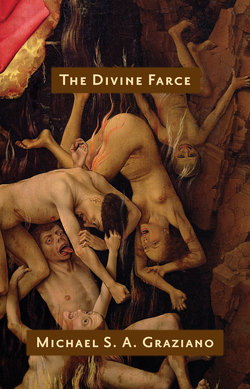Описание книги
“A Dante/Beckett reduction of human struggle to its lowest common denominator.”—Michael Mirolla, author of The Formal Logic of Emotion and Berlin “One of the most original and thought-provoking stories I have ever read…true literary art…Not a word is wasted in this masterpiece. Yes, I call it that. I have read many classics, and I can tell you that The Divine Farce should be counted among them; the finest in American literature.”—Geekscribe Three strangers are condemned to live together in darkness, crushed together in a concrete stall so small that they can never sit down. Liquid food drips down from above. Waste drains through a grid on the floor. So begins one of the strangest, most surreal comments on the human experience, on love and hatred and the human ability to find good in any situation, no matter how difficult. Michael S. A. Graziano delights in the macabre and surreal, yet it is his optimism that lifts this little novel. Like The Love Song of Monkey, this book is deeply thought provoking, horrifying, and funny. Praise for The Love Song of Monkey: “Imaginative, intelligent narrative. Twin ideas of forgiveness and mercy twist through this strange, moving, patiently wrought novel.”—Publishers Weekly “Fabulously imagined, seriously considered, and very funny. A kind of fairytale antithesis on the meaning of existence. . . . Fantastic.”—Spirituality and Health Books “Strange but wonderful . . . like nothing I’ve read before. A very short book, but the scope is epic in detail. . . . I enjoyed the heck out of this book.”—Geekscribe “Should be required reading in the writing grad schools. . . . There’s nary a word wasted. What’s left is comedy, retrospection, betrayal, tenderness, meditations on loneliness, a love story that survives all attempts to suppress it . . . not bad within 149 pages.”—Barnstable Patriot Michael S. A. Graziano, Princeton University neuroscientist, is the author of the novella Hiding Places (New England Review, 1997), the novel The Love Song of Monkey (Leapfrog Press, 2008), and The Intelligent Movement Machine (Oxford University Press, 2008).
